

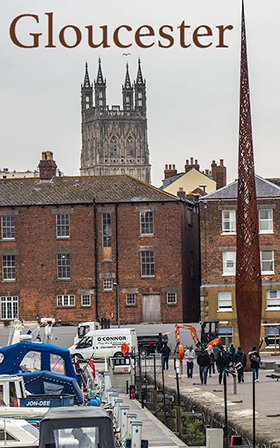
|
Gloucester is a inland port city on the Severn River, downstream from Ironbridge. I arrived on a chilly inclement evening unware of attractions this city had to offer. Research is not allways one of my strongest attributes. In England if you know nothing about a city's attractions a good place to start is the cathedral. If it is a city in England, it has a cathedral. |
Gloucester Cathedral was originally an abbey. Building in Gothic style commenced in 1082. Changed to a cathedral in 1541 by Henry VIII it is one the few abbeys to survive the Dissolution of the Monastries. With dimensions of 130m long, 44m wide and a 69m tower, it certainly the size of a church that I would regard as a cathedral. Size does not not determine whether a church is a cathedral. For example the cathedral sized Church of St Barbara in Kuta Hora, Czech Republic, is a church not a cathedral. In England a church is a cathedral if it is the seat of a bishop.

On of the mot noticable features of Gloucester Cathedral is its hugh stained glass windows. One of the largest is the west window. Installed in 1858, it depicts themes of the Birth of Christ; baptism; Noah and the Great Flood and the Israelites crossing the Red Sea.
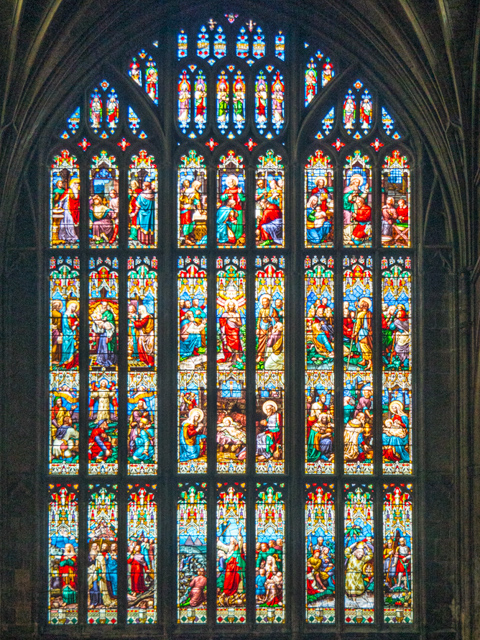
Gloucester Cathedral has many tombs. Perhaps the most significant is the tomb of King Edward II. Murdered in nearby Berkeley Castle he was buried here on December the 20th, 1327. At a later date a tomb was erected over his coffin, possibly by his son King Edward III. Its canopy was carved from Cotswold limestone and the base was faced with Purbeck marble. Pilgrims visited for up to 70 years after his death. In spite of the grand tomb and pilgrimages, Edward II is considered to be a failed King.
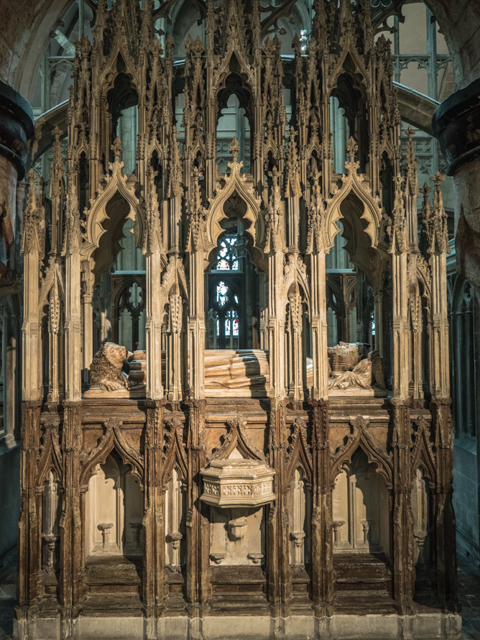
Another royal connection is the crowning of King Henry III in 1216, the only English monarch since the Norman Invasion not crowned in Westminster Abbey.
Climbing 269 steps brings me to the top of the bell tower. As I ascend I am close to the bells. Some of them look at though parts of them have been chipped away at the edges. The guide explained to me that it was done deliberately to adjust the bell's tone. At the top is substantial room allowing viewing of the surrounded country without the crowding that is often associated with such views.
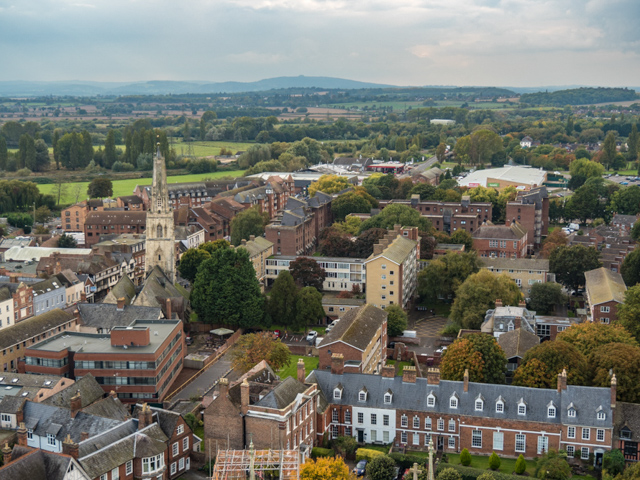
Near Gloucester Cathedral is the historical dock area. It is an area of partially restored canals and Victorian warehouses.

During the 18th century, barges 70ft long and 7ft wide carried cargoes such as grain and timber upstream. Barges were tugged upstream and could carry up to 30 tonnes of cargo. Boatmen got paid per trip and often used family members as crew. Round trips could last 15 days.
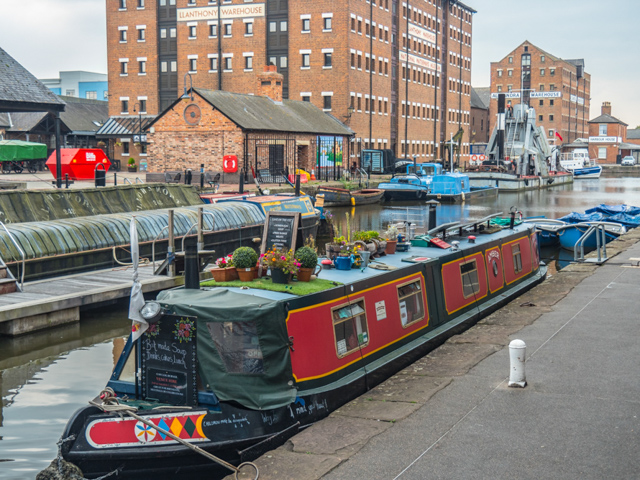
If they did not have cargo on the return journey they would clean their boats and polish the brass. During the 18th and 19th centuries boaters taking great pride in their barges would decorate them and their possessions with bright and cheerful designs. The style was called Roses and Castle. Where the inspiration originated is unknown. There were similarities to the elaborately painted caravans of gypsies. Folk art from Germany, Holland and even Asia may have contributed.
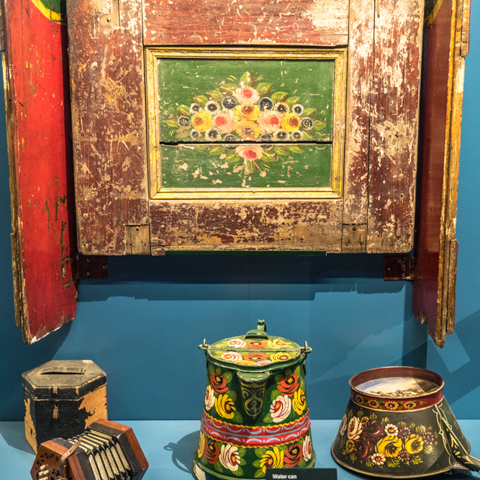
With the advent of larger ships and better developed land transportation Gloucester declined in importance as a port.
Many of the warehouses have been restored and are used as restaurants, museums and apartments.